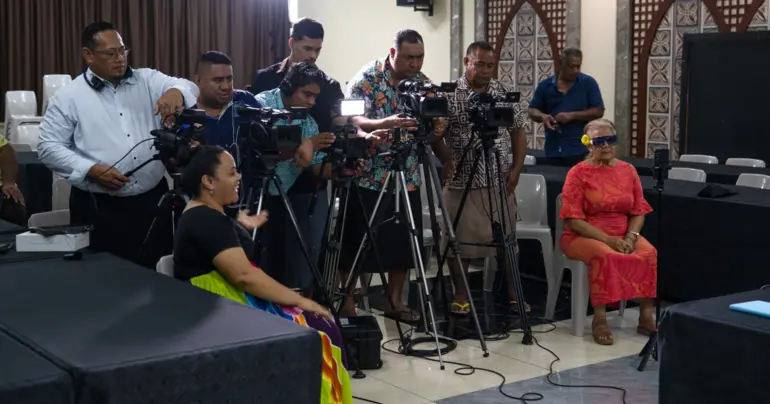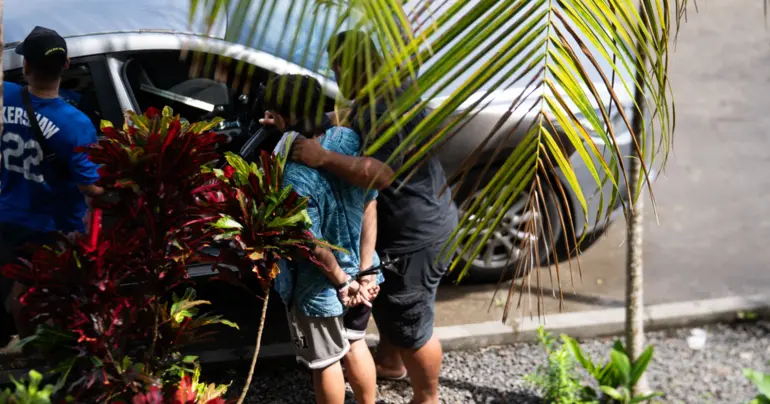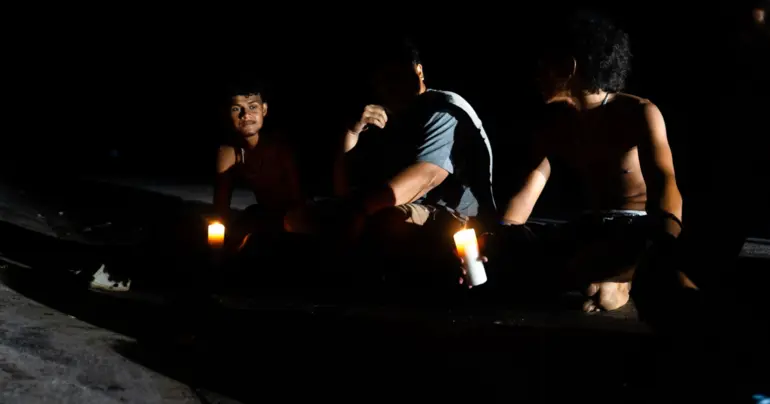Recession announcement delayed: so is the cure
 By The Editorial Board
•
23 February 2021, 11:30PM
By The Editorial Board
•
23 February 2021, 11:30PM
And so the economy has plunged into what the Central Bank of Samoa has described as a “full recession”.
What does that mean? In reality, almost nothing.
The central bank has been inexplicably late to the party to use the ‘r’ word and come clean about the state of our economy, until its quarterly bulletin for December 2020 was published this week.
“The economy is now in full recession,” the report stated.
The reality is Samoa has been in recession for much longer than that, however you slice the data.
The most inclusive and strictest definition of an economic recession is for an economy to have declined to two consecutive quarters. Many countries are much quicker to declare recessions if growth or employment fall significantly.
Our economy has also been shrinking for more than just two quarters.
Since the advent of COVID-19 and the closure of our national borders and the tourism industry on which so much of our economy depends our economy has been in consecutive decline.
The March, June, September and now December quarters for last year all registered negative growth.
Some of these declines have been eye-popping.
In September, for example, quarterly economic figures declined by more than 16 per cent.
Why our central bank had to wait until twice the time of the standard definition to acknowledge this unpalatable truth is beyond us.
But it does reflect a general reluctance on the Government’s part to acknowledge the economic realities that have been staring them - and us - in the face for some time.
The Samoa Observer revealed in January that ANZ economists estimated that some 18 per cent of people had lost their job in 2020.
But curiously unlike the other Pacific nations under review, it did not source its data from official Government figures but instead talks and forecasts with the nation’s largest employers.
In its reports for the past year, the Samoa Bureau of Statistics has used immeasurably more modest estimates of the number of Samoans who have been unemployed. For all quarters of last year, progressive figures of drops of less than 1 per cent were published.
We know whose estimates we place more faith in.
In its review of the final quarter of 2020, the Central Bank listed the unemployment rates of countries such as New Zealand, Australia and America but provided no statistics at all for Samoa.
A most generous interpretation would be that the central bank is being too shallow in its analysis of our nation’s economy; a most cynical would be that they are trying to downplay the extent of the problem.
Why we do not know.
The signs of economic recession are all around us, and there should be no shame in Samoa having experienced an economic recession; it was inevitable.
The whole world was thrown into recession last year.
Perhaps by obscuring the extent of the problem, the Government is trying to draw attention away from its lack of action in tackling it.
We have called in these pages for more private sector assistance repeatedly. And we are not alone.
Bernie Poort, Chairman of the Samoa Bankers’ Association and the country manager for ANZ, called on the Government in November to lift its game and pour money into the economy in order to counter the economic downturn.
“Nothing seems to be forthcoming,” he said.
“Looking around other Pacific Islands, like Australia and New Zealand their Governments are spending large amounts of money to keep people employed and their economies moving forward, in Samoa we just haven’t seen that.”
Little has changed in the more than three months since he made this appeal.
We have already raked over the deficiencies of the Government’s previous economic relief package, plumped up, as it was, by measures that fell well short of actual economic stimulus.
These policies, which included discounts on basic utilities, lifting rent for commercial tenants on Government property, three-month wharfage fee waivers and interest relief on short-term loans increased the notional size of the Government’s economic stimulus package unveiled in May and April.
But in substance, there was too much focus on discounts and waives. They did not do much at all to assist the economy by pumping money directly into the private sector to help businesses stay afloat or to provide jobs for people who found themselves unemployed.
Since then we have seen ad-hoc measures taken by the Government to prop up the private sector where it can, such as doling out $250,000 to a select group of private sector organisations mid-last year.
Cabinet has also given hotels up to their necks in debt an extension in paying back debts owed to the Development Bank of Samoa.
But these measures are patchy at best; they appear designed to stave off collapse rather than to actively resuscitate the economy.
We have not had the Government systematically pump money into the private sector since May.
Again, the logic behind this thinking eludes us.
So too does the Government’s focus on paying down the national debt at a time when almost every economy in the world is borrowing money to fund packages for jumpstarting their economies.
And yet Samoa is one of the few economies in the world to decrease its Government spending right when it is most needed.
An analysis published last year by economists from the Australian National University found that Samoa’s budgetary output was declining by 8 per cent - a stark contrast to other nations in the region and around the world.
As the economy has gone to pieces, the Government has been boasting about paying down the national debt by some $40 million.
Governments all over the world are going into billions of dollars in debt to steer their private sectors through the choppy financial waters of the COVID-19 downturn.
Australia and New Zealand’s Government have paid businesses directly to keep people employed for the duration of the economic downturn. But across the region we have also seen more modest but effective policies that have put money where it is needed: into the economy. These have ranged from cash grants to businesses in the Solomon Islands and Vanuatu to concessional loans to business in the Federated States of Micronesia to major infrastructure projects designed to tackle unemployment across the region. Several Pacific islands’ central banks have also been active in loosening their monetary policy to usher more money into the economy and the hands of business.
Why Samoa’s approach should be any different makes no sense.
That we have to dedicate money to debt repayments suggests one of two things: the Government is dealing with a history of economic mismanagement that has left us with no maneuvering room for a rainy day, or it simply has its priorities wrong.
But of course, we do not advocate simply increasing Government spending for the sake of it: economic stimulus should be targeted and designed to reach the businesses and consumers who need it most.
If there is no room in the national coffers to fund such measures then we suggest the Government ought to revisit its priorities.
Another interesting figure contained in economic data for 2020 was the amount of money the Government was spending on paying its own employees or put another way the size of the public sector.
Compensation for bureaucrats in the fiscal year 2016-2017 stood at $170 million, statistics bureau figures show.
By the 2018-19 Financial Year that figure had climbed some $60 million to reach more than $230 million.
Diverting this growing expenditure toward the private sector would, we believe, do more good for the nation, its economy, and its people.
The Government has been late to declare the extent of Samoa’s economic problems. It must not continue to delay the remedy we need.
 By The Editorial Board
•
23 February 2021, 11:30PM
By The Editorial Board
•
23 February 2021, 11:30PM










